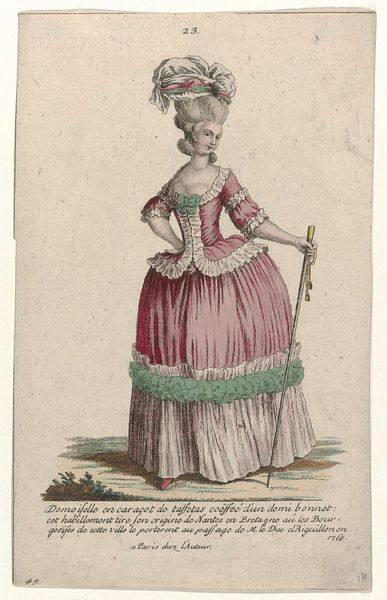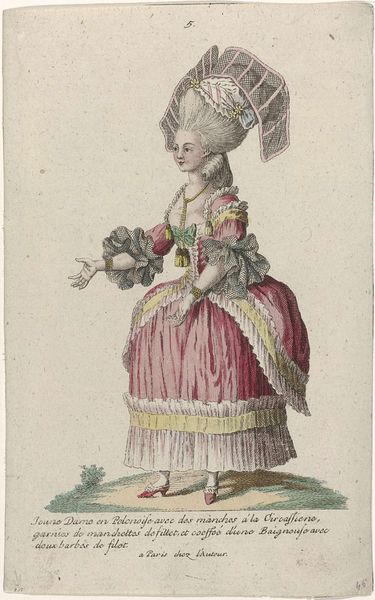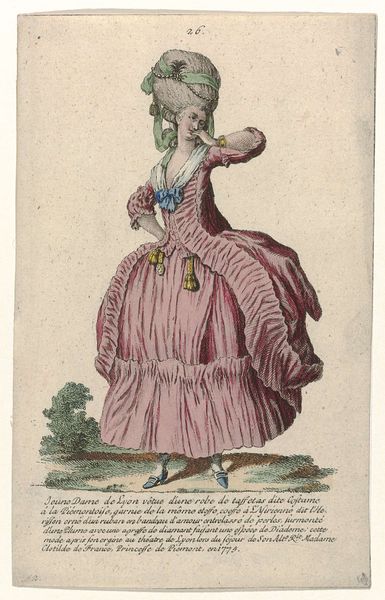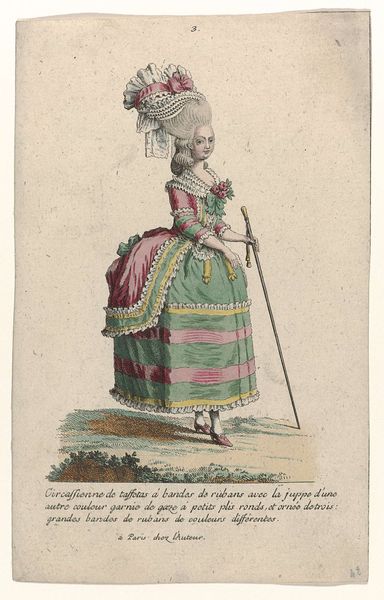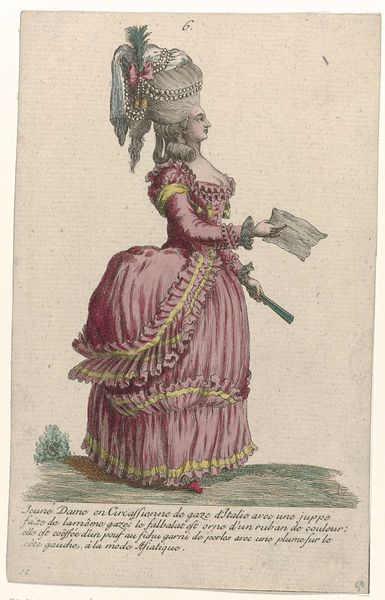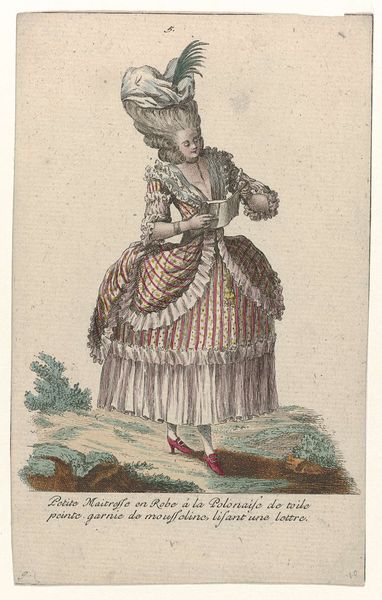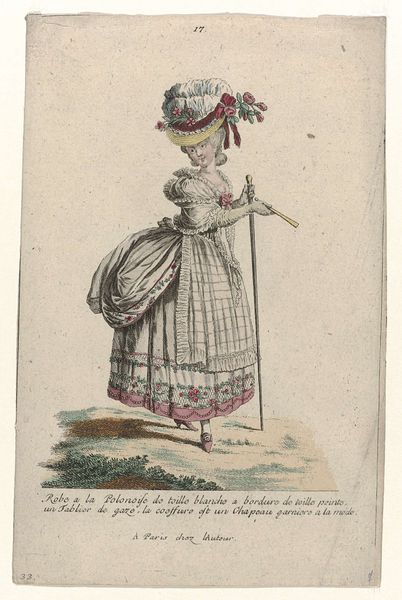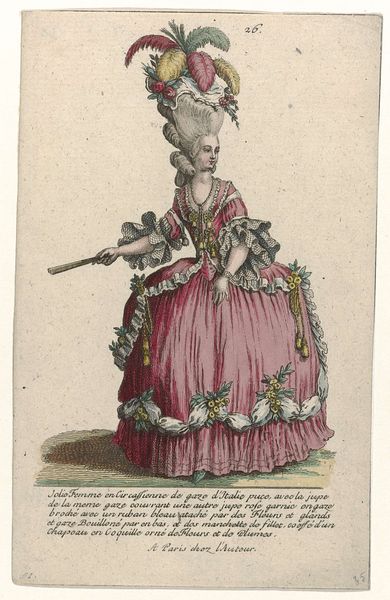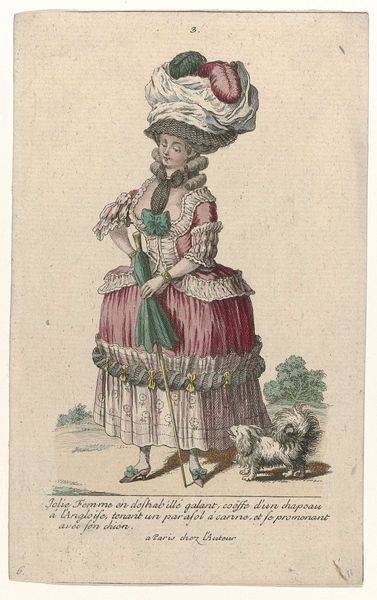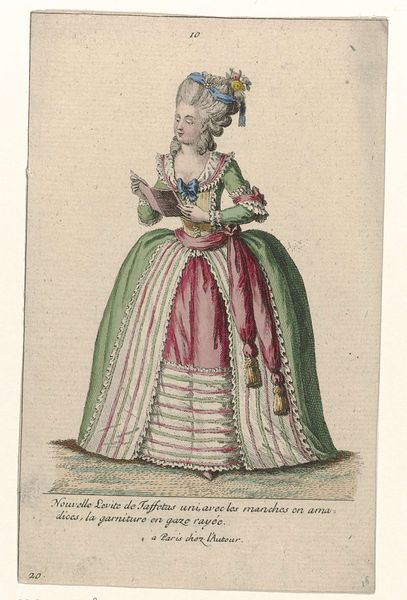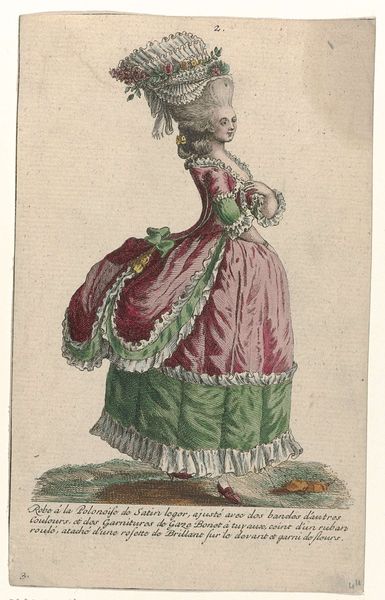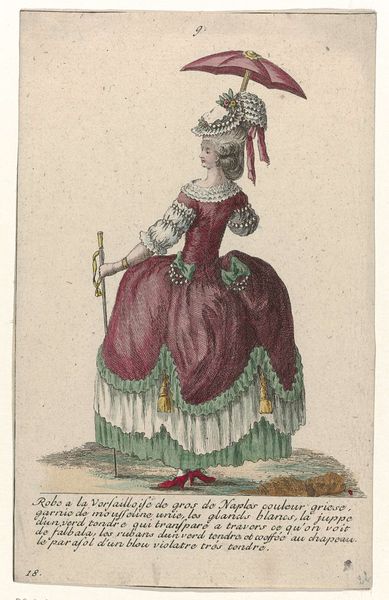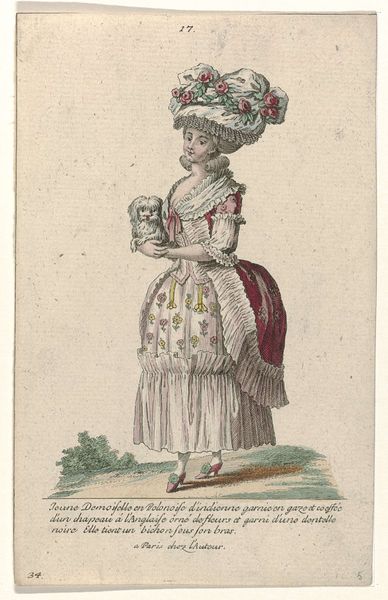
Gallerie des Modes et Costumes Français, 1785, nr. 6, nr.12, Kopie naar P 86 : Jeune Dame vêtue à l'Austrasienn (...). c. 1785
0:00
0:00
Dimensions: height 179 mm, width 111 mm
Copyright: Rijks Museum: Open Domain
Curator: Here we have "Gallerie des Modes et Costumes Français", dating from around 1785. This particular piece, rendered as an engraving, presents a fashionably dressed young lady. What catches your eye first about this work? Editor: Well, undeniably, the towering hairstyle commands immediate attention! The composition seems to almost build upwards from the small shoes to this elaborate confection atop her head. The colors are muted but balanced, providing a strangely appealing aesthetic, given the excesses it depicts. Curator: Indeed. And note the context: these fashion plates were commodities. They were circulated among the wealthy to dictate style, employing teams of engravers, colorists, and printers. The subject isn't just an image, it's a node in a network of consumption. Editor: I'm more interested in the details themselves, actually. Look at the precise lines used to delineate the fabric's texture and the subtle gradations in color achieved through hatching. It shows masterful technique for a relatively utilitarian object. Consider the contrast between the flowing skirt and the rigidity of her torso created by that unforgiving corset! Curator: Certainly. But it also presents a fascinating example of material culture shaping identity. Each detail-- the "Austrasian" sleeves, the Peruvian-inspired overskirt -- signals social status and geographical awareness within a culture obsessed with surfaces and novelty. Fashion became a signifier for those seeking status, a way to broadcast one's allegiances. Editor: That may be, but the careful balance achieved through compositional techniques—the placement of the figure relative to the framing of the background trees—speak to me. Even the restrained color palette elevates it beyond simple cataloging; it is aesthetically resolved. The skill in its visual language cannot be ignored! Curator: Perhaps so, but for me, its value lies in what it reveals about labor and aspiration in pre-revolutionary France. The layers of artifice literally embody social stratification! Editor: I suppose we've both found a bit of intrigue here, just by looking closely and asking our different kinds of questions. Curator: Absolutely. An image intended to project status ends up reflecting, quite unintentionally, the very structures it sought to uphold.
Comments
No comments
Be the first to comment and join the conversation on the ultimate creative platform.
